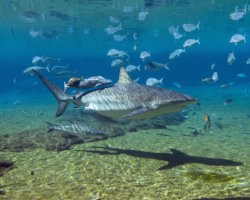Sealife guideThe Caribbean spiny lobsterPanulirus argus
Last updated on 03/06/2025 at 10:36 PM
Taxonomy
- Common name: Caribbean spiny lobster, West indies spiny lobster, west indian spiny lobster
- French name: Langouste des Caraïbes ou langouste royale, langouste blanche
- Spanish name: Langosta común del caribe,langosta del golfo
- Scientific name: Panulirus argus (Latreille, 1804)
- Family name: Panuliridae
- Order name: Decapoda
- Class name: The crustaceans [Malacostraca]
Description
The Caribbean spiny lobster has a long and cylindrical body, covered with a hard and spiny exoskeleton. The color of the Caribbean spiny lobster is generally light brown to bluish, with yellow and white markings on the shell and legs.

The Caribbean spiny lobster (Panulirus argus)
The head of the Caribbean spiny lobster has long and flexible antennae that help it navigate its environment.
Geographic range
The Caribbean spiny lobster frequents the tropical and subtropical coastal waters of the western Atlantic ocean, particularly found in the Caribbean sea, the Gulf of Mexico and southern
Florida.
Habitat
The Caribbean spiny lobster is primarily found on rocky bottoms and coral reefs, where it finds natural shelters. It prefers relatively shallow waters, usually between 30 to 200 feet deep.
It is also found in seagrass beds and mangroves which offer protection from predators.
Diet
The Caribbean spiny lobster is primarily nocturnal and hides in crevices and underwater caves during the day, emerging at night to feed on small invertebrates,
mollusks and fish.
The Caribbean spiny lobster is also known for its social behaviors in refuges where multiple individuals can coexist in harmony.
Reproduction
The reproduction of the Caribbean spiny lobster is sexual with seasonal breeding periods. The female carries the eggs in a pouch located under her abdomen until they hatch. The lobster larvae go through several developmental stages before settling on the seafloor and metamorphosing into adults.
Did you know ?
The Caribbean spiny lobster holds significant economic interest due to its commercial value and the fishing industries in many coastal regions.
The Caribbean spiny lobster is an important food resource, especially in the Caribbean and
Florida. Lobster fishing is regulated in many areas to ensure the sustainability of populations, with defined fishing seasons and minimum capture sizes.
The caribbean spiny lobster is listed as many other marine species within The
IUCN Red List of threatened species. The caribbean spiny lobster appears in the
IUCN Red List since 2011 within the category Data Deficient !
Within the same genus
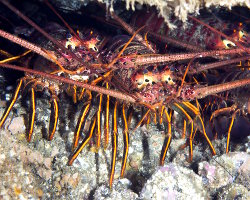
California spiny lobster
(Panulirus interruptus)

Japanese crayfish
(Panulirus japonicus)
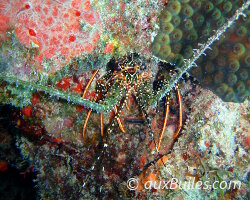
Spotted spiny lobster
(Panulirus guttatus)
Within the same family
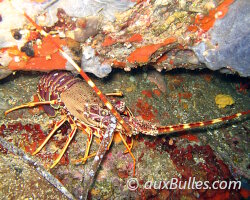
European spiny lobster
(Palinurus elephas)
Discover also

Atlantic ghost crab
(Ocypode quadrata)

Bowed fiddler crab
(Uca arcuata)

European green shore crab
(Carcinus maenas)

Green porcelain crab
(Petrolisthes armatus)

Leopard-spotted crab
(Ovalipes ocellatus)

Pederson cleaner shrimp
(Ancylomenes pedersoni)

Sculptured slipper lobster
(Parribacus antarcticus)
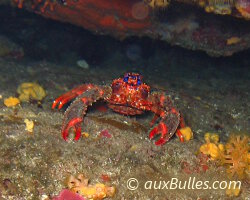
Spinous squat lobster
(Galathea strigosa)
The marine species from northwestern Atlantic ocean
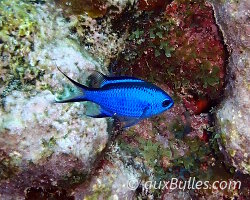
Blue chromis
(Azurina cyanea)
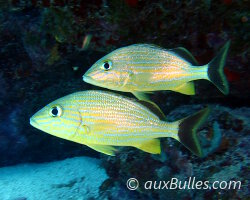
Blue striped grunt
(Haemulon sciurus)
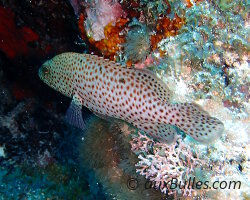
Graysby
(Cephalopholis cruentata)
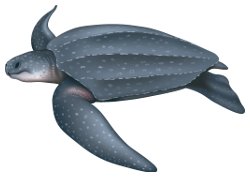
Leatherback sea turtle
(Dermochelys coriacea)

Long-spined sea urchin
(Diadema antillarum)

Mutton snapper
(Lutjanus analis)
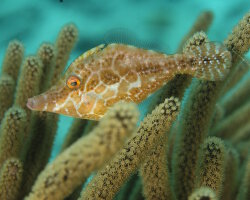
Slender filefish
(Monacanthus tuckeri)
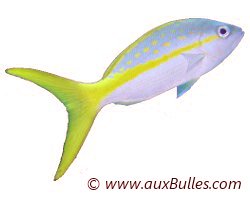
Yellowtail snapper
(Ocyurus chrysurus)






















